-
CATEGORY ::
- All Seeds /
- All Flower Seeds /
- All Salvia Seeds





Salvia Seeds - Pink Sunday
SEASON
Annual
USDA ZONES
3 - 10
HEIGHT
18 - 28 inches
BLOOM SEASON
Summer through fall
BLOOM COLOR
Pink
ENVIRONMENT
Partial shade
SOIL TYPE
Well-drained, pH 5.5 - 6.5
DEER RESISTANT
Yes
SEEDS PER POUND
367,863
SEASON
Perennial
USDA ZONES
7 - 10
HEIGHT
24 - 36 inches
BLOOM SEASON
Mid-summer
BLOOM COLOR
Blue
ENVIRONMENT
Full sun to partial shade
SOIL TYPE
Well-drained, pH 5.5 - 6.5
DEER RESISTANT
Yes
SEEDS PER POUND
275,000
SEASON
Perennial
USDA ZONES
6 - 9
HEIGHT
24 - 36 inches
BLOOM SEASON
Summer through fall
BLOOM COLOR
Scarlet red
ENVIRONMENT
Full sun
SOIL TYPE
Well-drained, pH 5.5 - 6.5
DEER RESISTANT
Yes
SEASON
Perennial
USDA ZONES
8 - 10
HEIGHT
20 inches
BLOOM SEASON
Summer through fall
BLOOM COLOR
Blue
ENVIRONMENT
Full sun to partial shade
SOIL TYPE
Well-drained, pH 5.5 - 6.5
DEER RESISTANT
Yes
SEASON
Perennial
USDA ZONES
8 - 10
HEIGHT
20 inches
BLOOM SEASON
Summer through fall
BLOOM COLOR
White
ENVIRONMENT
Full sun to partial shade
SOIL TYPE
Well-drained, pH 5.5 - 6.5
DEER RESISTANT
Yes
SEASON
Annual
USDA ZONES
3 - 10
HEIGHT
18 - 28 inches
BLOOM SEASON
Summer through fall
BLOOM COLOR
Blue
ENVIRONMENT
Partial shade
SOIL TYPE
Well-drained, pH 5.5 - 6.5
DEER RESISTANT
Yes
SEASON
Annual
USDA ZONES
3 - 10
HEIGHT
18 - 28 inches
BLOOM SEASON
Summer through fall
BLOOM COLOR
White
ENVIRONMENT
Partial shade
SOIL TYPE
Well-drained, pH 5.5 - 6.5
DEER RESISTANT
Yes
SEASON
Perennial
USDA ZONES
6 - 10
HEIGHT
28 inches
BLOOM SEASON
Summer through fall
BLOOM COLOR
Blue-Purple
ENVIRONMENT
Full sun to partial shade
SOIL TYPE
Well-drained, pH 5.5 - 6.5
DEER RESISTANT
Yes
About...
Salvia (Salvia Horminum Pink Sunday ) - Pink Sunday Salvia makes a great fresh cut flower and does well dried too as they hold their vivid color. Deadheading keeps fresh blooms coming, but this Salvia will also re-seed, so leave a few spent blooms on the plant to drop Salvia seeds for next season's display.
MORE SALVIA OPTIONS
Planting Directions
TEMPERATURE
68F
AVERAGE GERM TIME
10 - 30 days
LIGHT REQUIRED
Yes
DEPTH
Do not cover the seed but press into the soil
SOWING RATE
3 - 4 seeds per plant
MOISTURE
Keep seeds moist until germination
PLANT SPACING
12 - 18 inches
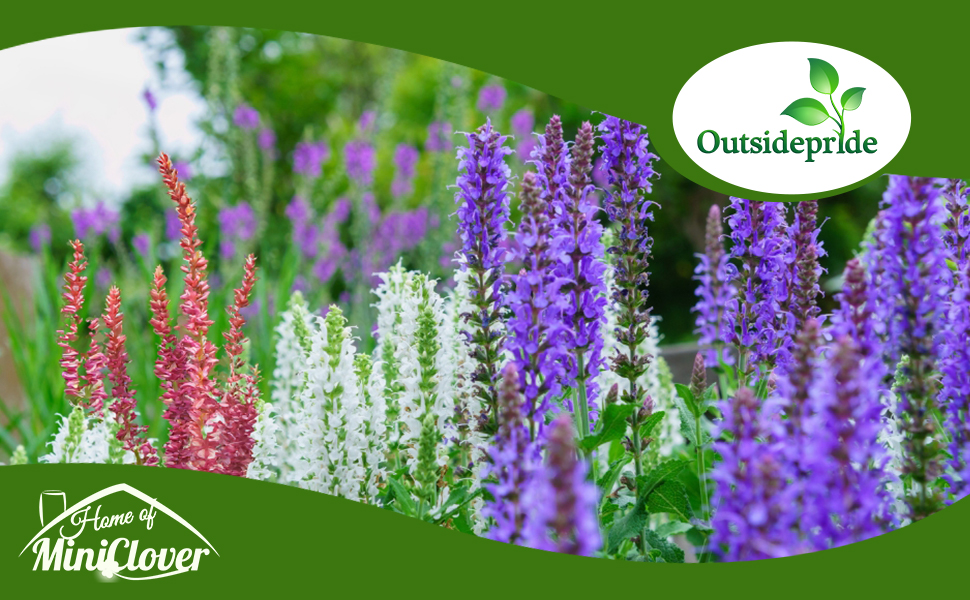
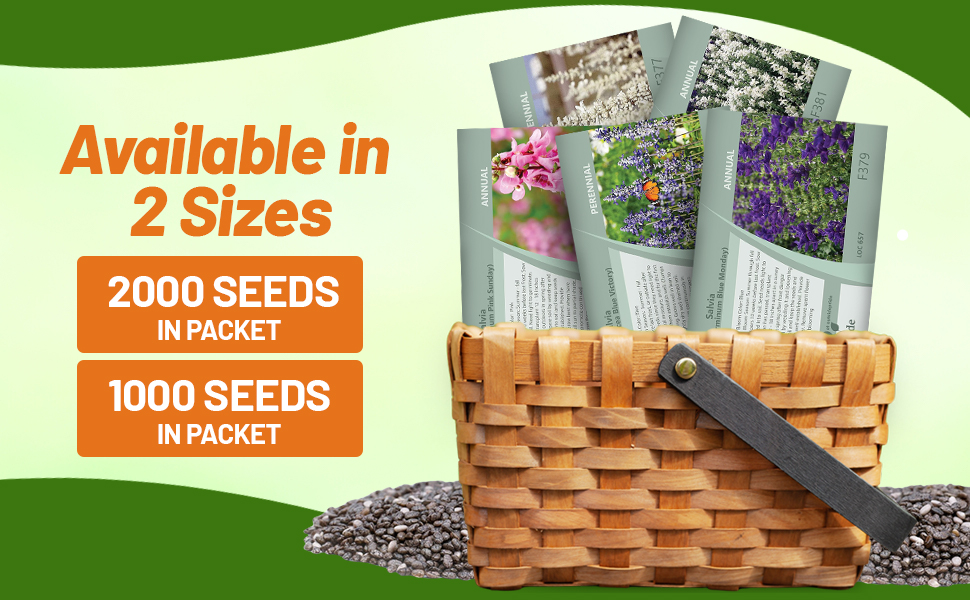
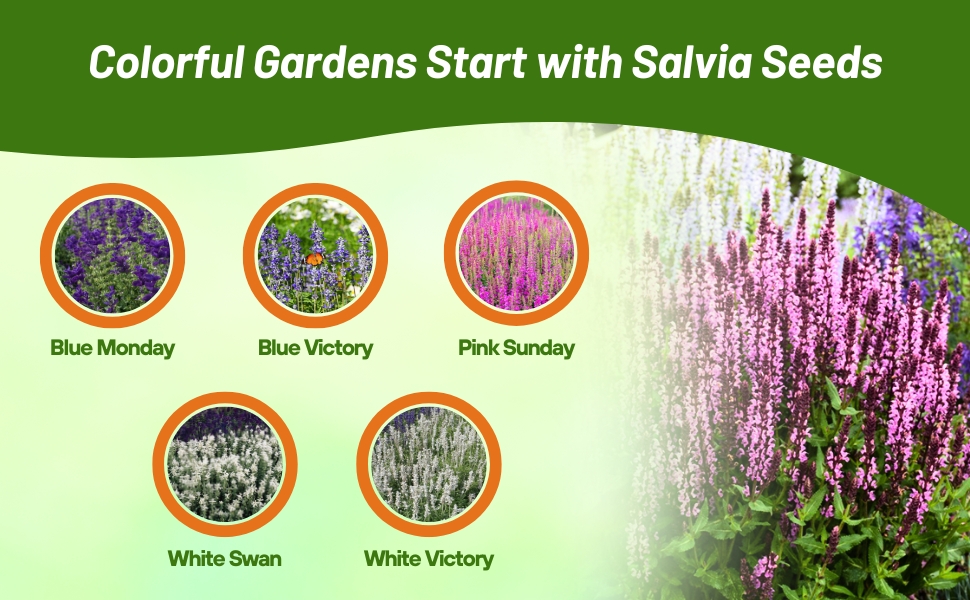
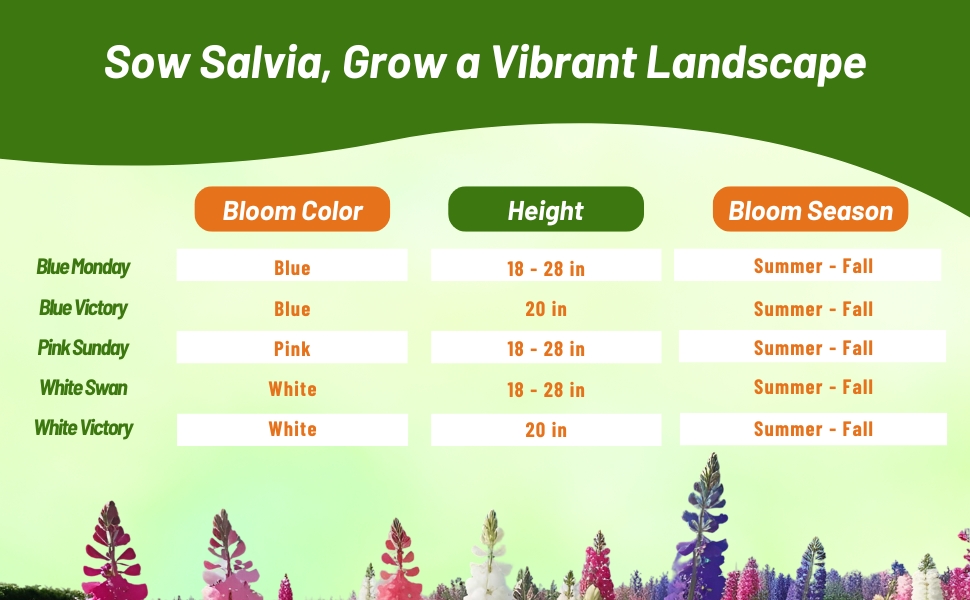
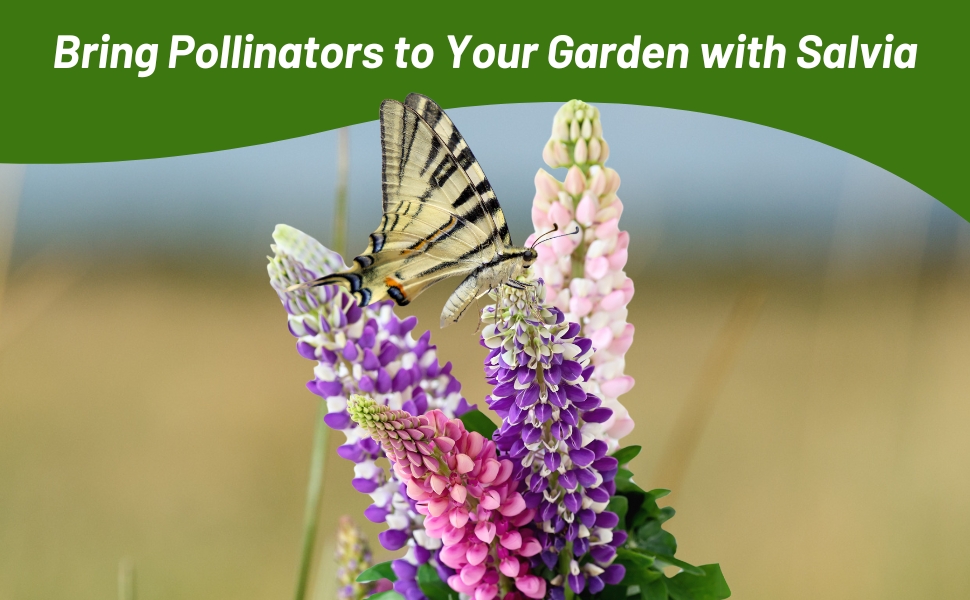
Salvia (Salvia Horminum Pink Sunday ) - Many gardeners consider Salvia Horminium to be one of the most garden worthy plants of the sage family. The Salvia Pink Sunday plant is easy-to-grow from flower seed, and it is vigorous, quick growing, nicely branching, and tops out at about 28 inches tall. Pink Sundae Salvia has 1 inch pink flowers grouped in threes which will last all summer long and sometimes clear up until frost season. Pink Sunday Salvia makes a great fresh cut flower and does well dried too as they hold their vivid color. Deadheading keeps fresh blooms coming, but this Salvia will also re-seed, so leave a few spent blooms on the plant to drop Salvia seeds for next season's display.
How To Grow Salvia From Seeds: For earlier blooms, sow Salvia seeds indoors 10 weeks before last frost. Sow the flower seed in starter trays and press the seed into the soil. Pink Salvia seeds need light to germinate. When the frost season has passed, transplant Salvia seedlings into the garden 12 - 18 inches apart in a sunny location. Or, sow Salvia flower seeds outdoors in spring after frost danger has passed and prepare soil by weeding it and loosening it. Lightly rake the flower seeds into the soil and keep the seeds and young Salvia seedlings moist until well-established. Provide plenty of water in dry weather. Salvia plants grow best when provided moist, but well-drained soil in full sun to partial shade. Salvia Flower Care: Removed the spent flower spikes to promote continued blooming. If the Pink Salvia plant begins to look tired in mid-summer, trim it back by 1/3, and it will be re-energized and reward you with more blooming.
Common Questions
Can I grow salvia in containers?
Yes, smaller varieties are great for containers.
Are salvias good as cut flowers?
Yes, they make excellent cut flowers.
Is salvia a good pollinator plant?
Yes, salvia attracts bees, butterflies and hummingbirds to the garden.
Is salvia an annual or perennial?
Many varieties are annual and many varieties are perennial. The herb sage is a perennial salvia.
Planting Directions
TEMPERATURE
68 - 75F
AVERAGE GERM TIME
10 - 30 days
LIGHT REQUIRED
Yes
DEPTH
1/16 inch
SOWING RATE
3 ounces per 1,000 square feet or 7 pounds per acre
MOISTURE
Keep seeds moist until germination
PLANT SPACING
12 - 18 inches
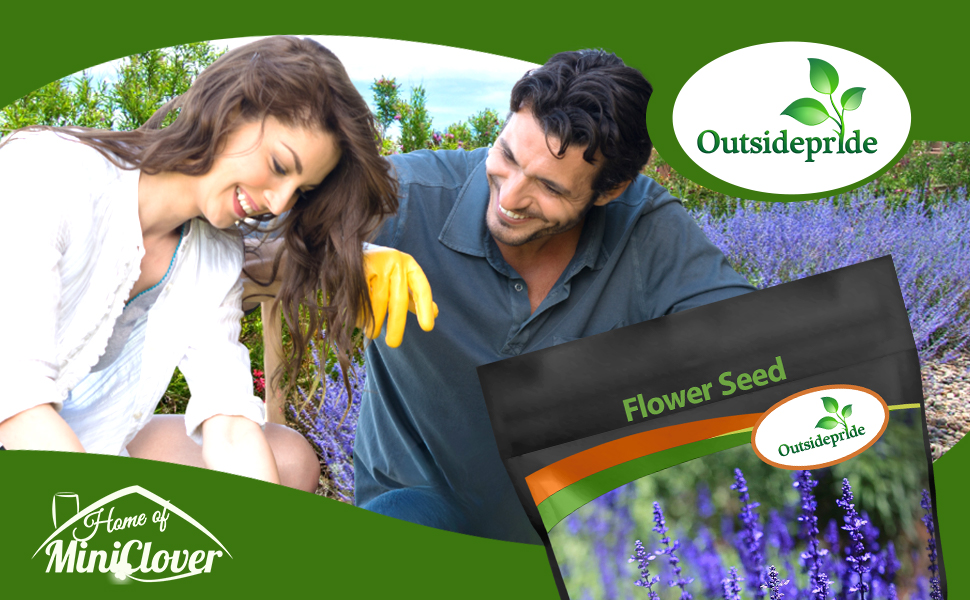
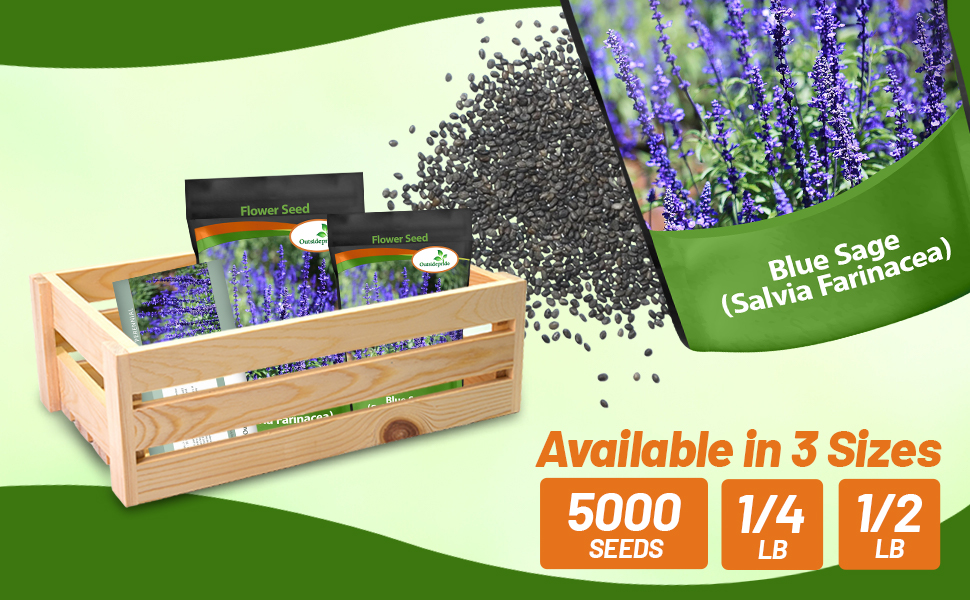
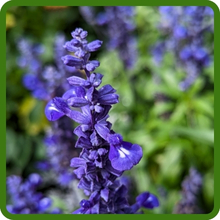
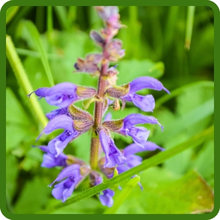
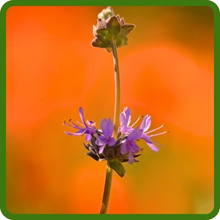
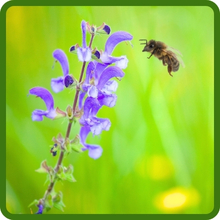
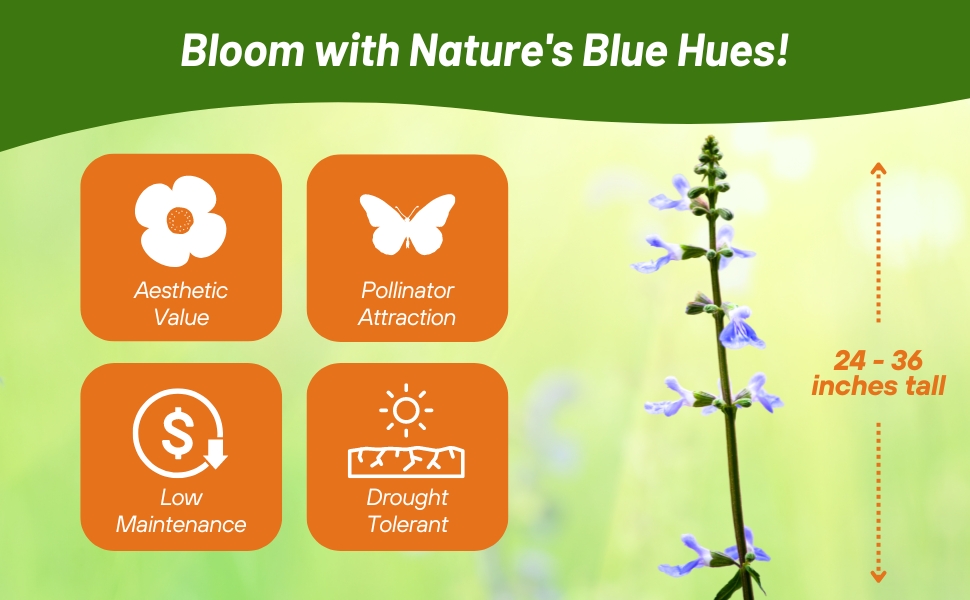
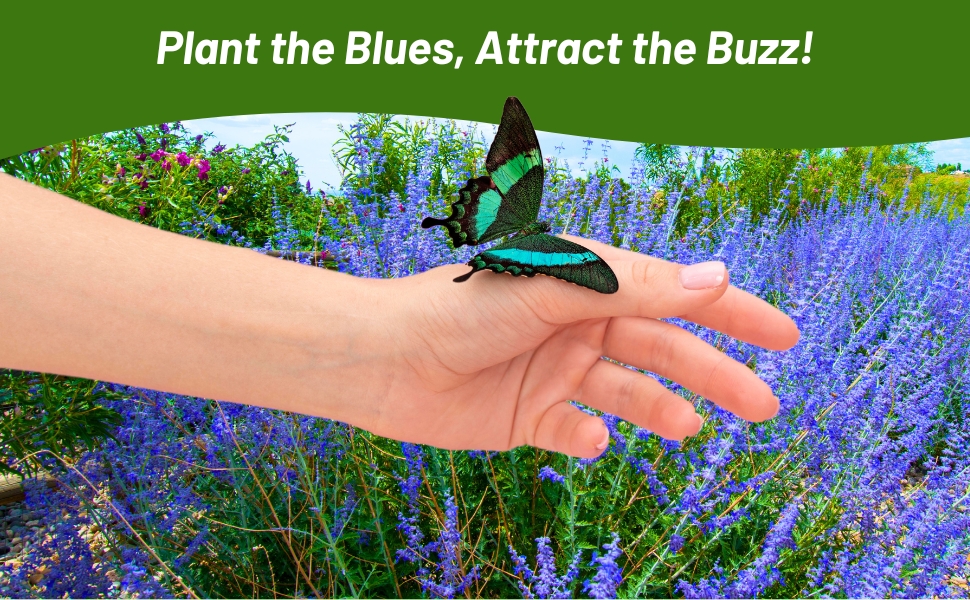

Blue Sage (Salvia Farinacea) - Blue Sage is perfect for the perennial border or the wild flower meadow. It is easily grown from Sage seeds, and it will attract butterflies and hummingbirds like a magnet! Plant Blue Sag drought tolerant wildflowers in a mass grouping for a dramatic display of blue for any sunny landscape setting. It is especially nice in cottage gardens, xeriscape rock gardens or wild flower gardens.
If you want to get an early jump, start these Blue Sage seeds indoors 10 weeks before last frost. Sow the wildflower seed in starter trays, press the seed into the soil and barely cover. Blue Sage seeds needs light to germinate. When the frost season has passed, transplant the Blue Sage seedlings into the garden 12 - 18 inches apart in a sunny location. Give them plenty of water in dry weather. In the southern half of the United States where temperatures can be extreme, this type of Salvia may need light to moderate shade instead of full sun. Blue Sage will do best in areas that have moderate humidity. After an extended period of flowering, trim the Salvia Farinacea plant back to produce a thicker and more compact foliage and a shorter flowering plant. The trim will delay flowering for a few days, but it is important in preventing leggy plants, and the blooms will come back heavily.
Common Questions
Will blue sage attract any pollinators to my garden?
Bees, butterflies and hummingbirds all enjoy the blue sage flowers.
Are salvias good as cut flowers?
Yes, they make excellent cut flowers.
Is salvia a good pollinator plant?
Yes, salvia attracts bees, butterflies and hummingbirds to the garden.
What are some good ways to use blue sage in my landscape?
Beds, borders, banks, containers, wall side borders, cut flower gardens, mediterranean gardens, informal gardens, courtyard and coastal gardens as all lovely ways to use the blue sage plants.
What are some good companion plants for blue sage plants?
Coneflower, cosmos, zinnia and rudbeckia are all very lovely planted along side the blue sage flowers.
Planting Directions
TEMPERATURE
68 - 75F
AVERAGE GERM TIME
10 - 30 days
LIGHT REQUIRED
Yes
DEPTH
1/16 inch
SOWING RATE
4 ounces per 1,000 square feet or 9 pounds per acre
MOISTURE
Keep seeds moist until germination
PLANT SPACING
12 - 18 inches


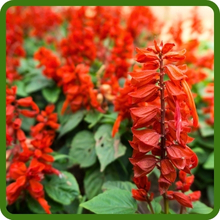
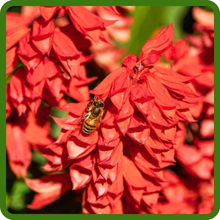
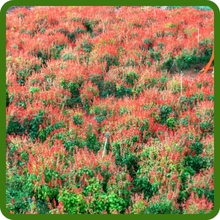
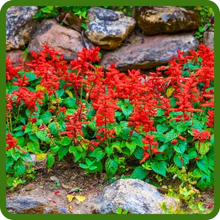

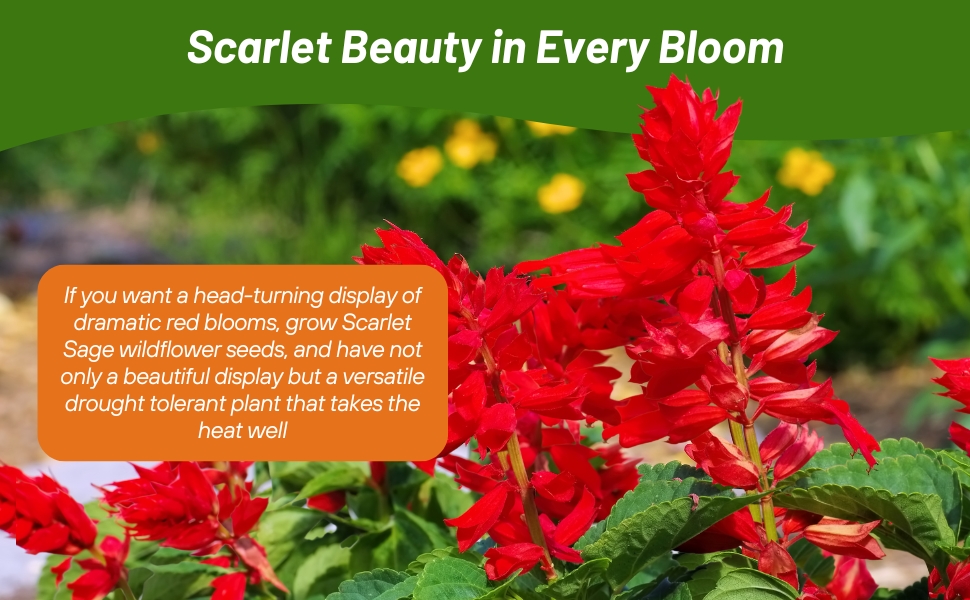
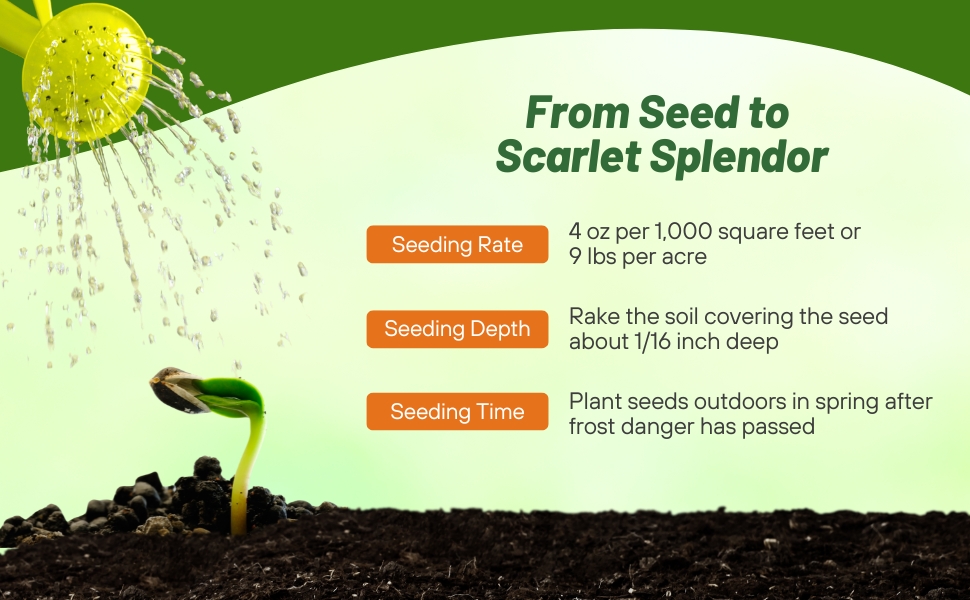
Scarlet Sage (Salvia Coccinea) - If you want a head-turning display of dramatic red blooms, grow Scarlet Sage wildflower seeds, and have not only a beautiful display but a versatile drought tolerant plant that takes the heat well. Scarlet Sage is a perennial in warmer climates and an annual where winter temperatures stay below freezing for more than a few hours at a time. The Salvia Coccinea plant reaches 24 - 36 inches tall, with 1 - 2 inch triangular leaves growing opposite each other on a square stem. The Scarlet Sage flower is very showy, bright red, about an inch long, and arranged in loose whorls along the upright spikes. Blooms appear continuously from early summer to first frost. Trim them back and a new flush of blooms will appear. Hummingbirds cannot leave these magnificent blooms alone. Growing Scarlet Sage seeds is greatly rewarding! Very drought tolerant plant; however, it will not flower well if it receives no water.
Common Questions
Are salvias good as cut flowers?
Yes, these flowers work great for fresh cut flowers as well as dried flower arrangements.
Is salvia a good pollinator plant?
Bees, butterflies and hummingbirds all enjoy the red sage flowers.
What are some good ways to use red sage in my landscape?
Beds, borders, banks, containers, wall side borders, cut flower gardens, mediterranean gardens, informal gardens, courtyard and coastal gardens as all lovely ways to use the red sage plants.
What are some good companion plants for red sage plants?
Erigeron karvinskianus, yarrow and Indian blanket are all very lovely planted along side the red sage flowers.
Planting Directions
TEMPERATURE
68 - 75F
AVERAGE GERM TIME
10 - 30 days
LIGHT REQUIRED
Yes
DEPTH
Do not cover the seed but press into the soil
SOWING RATE
3 - 4 seeds per plant
MOISTURE
Keep seeds moist until germination
PLANT SPACING
12 - 18 inches
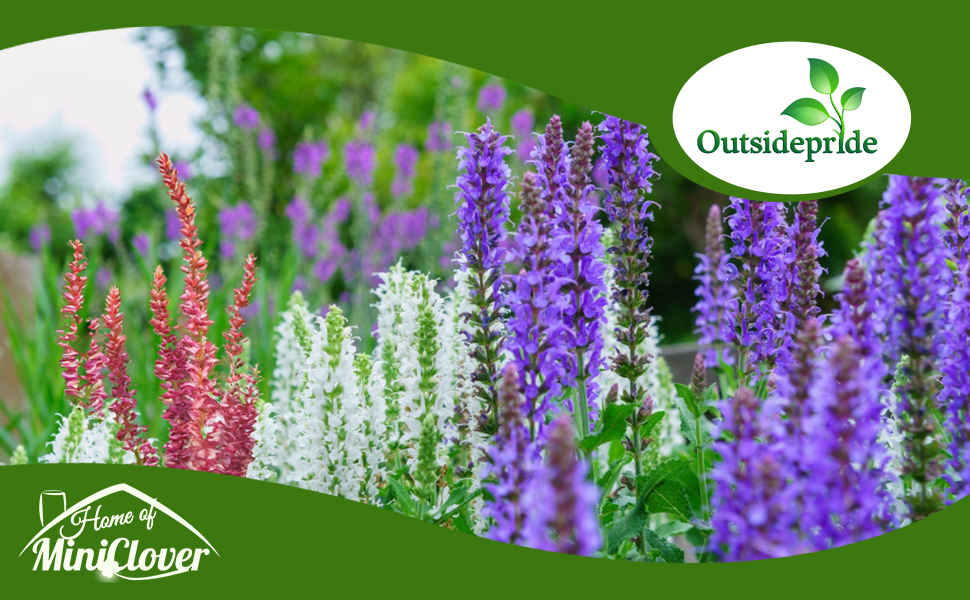
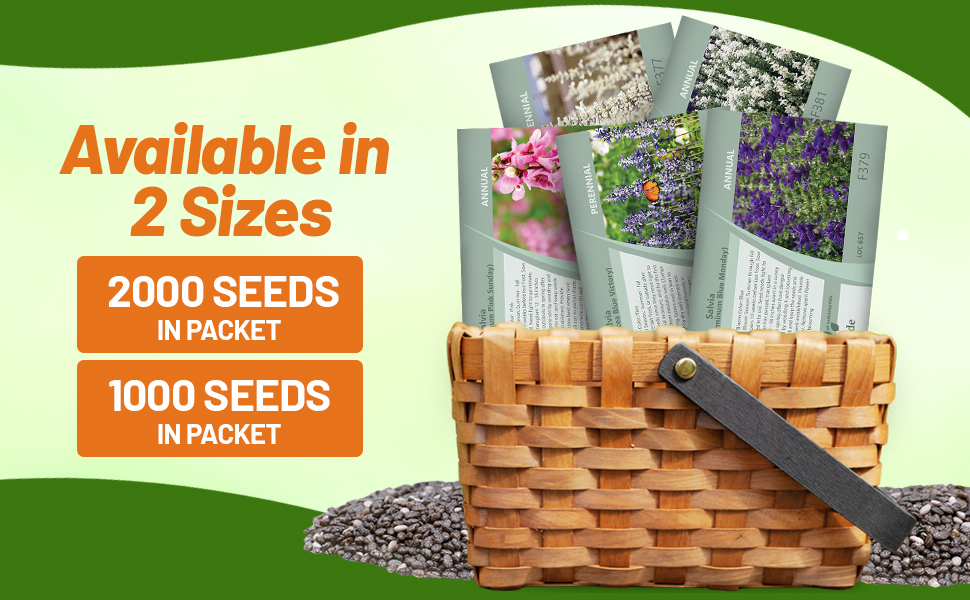
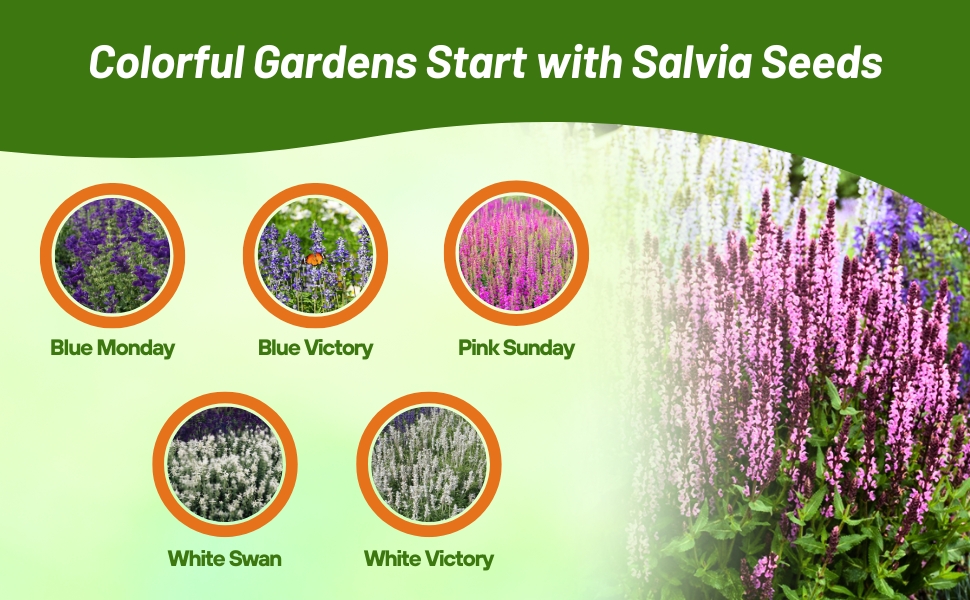
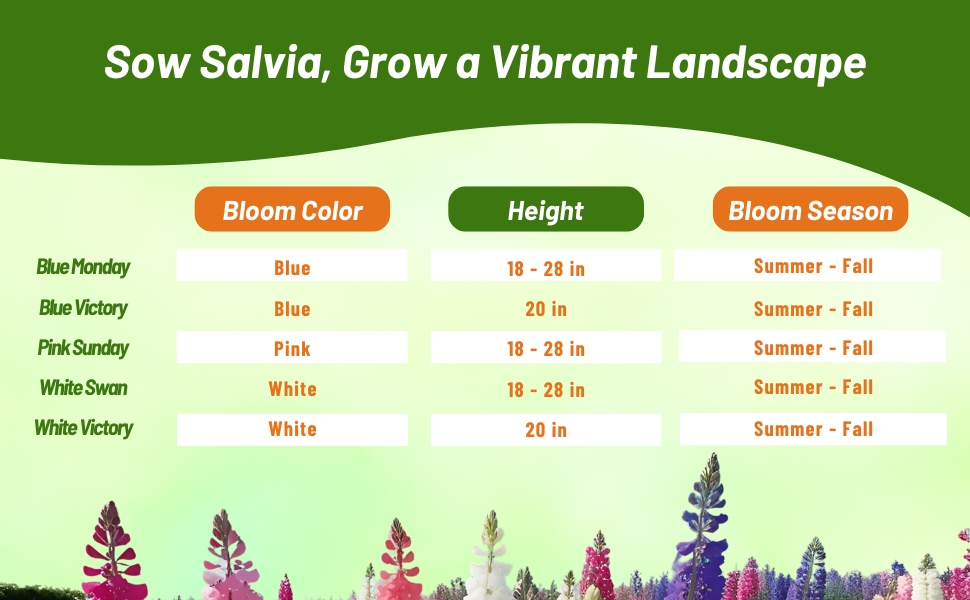
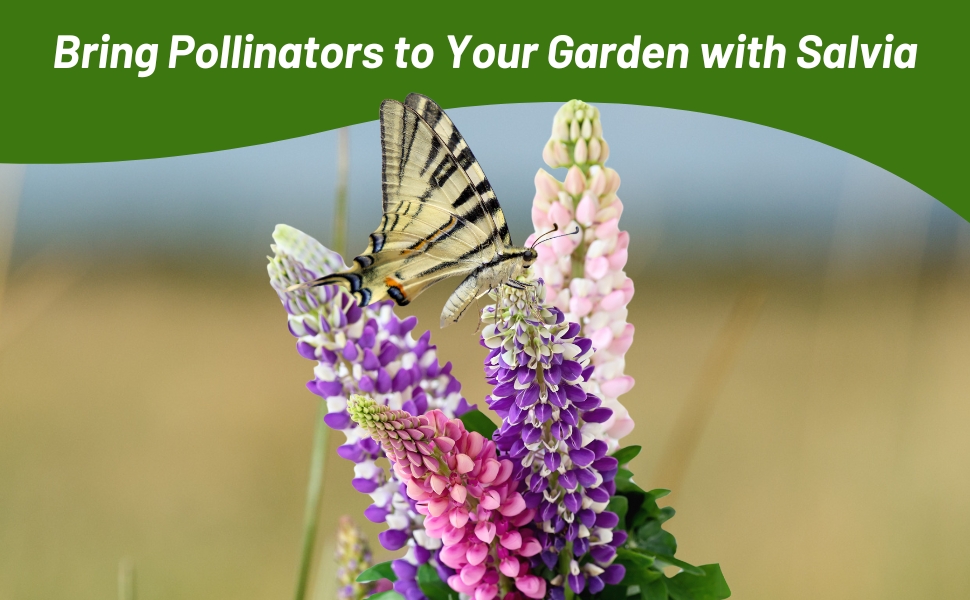
Blue Salvia grows well in lean to average soil and prefers slightly dry soil that is well drained. Fertilize only as needed. They will bloom continuously in warm weather and survive light freezes. Afternoon shade is appreciated in very hot areas, and it prolongs the life of the plant which may last several years. In ideal conditions, plants may last up to 5 years. As an added benefit, Salvias are generally deer resistant!
Sow Salvia seeds indoors 6 - 8 weeks before last frost, or outside after danger of frost has passed. Do not cover the flower seeds since they need light to germinate. The seeds need continual moisture, and for the first year, water the plants to help them establish well. After establishment, mealcup sage will be quite resistant to drought. Clumps can also be divided in the spring.































